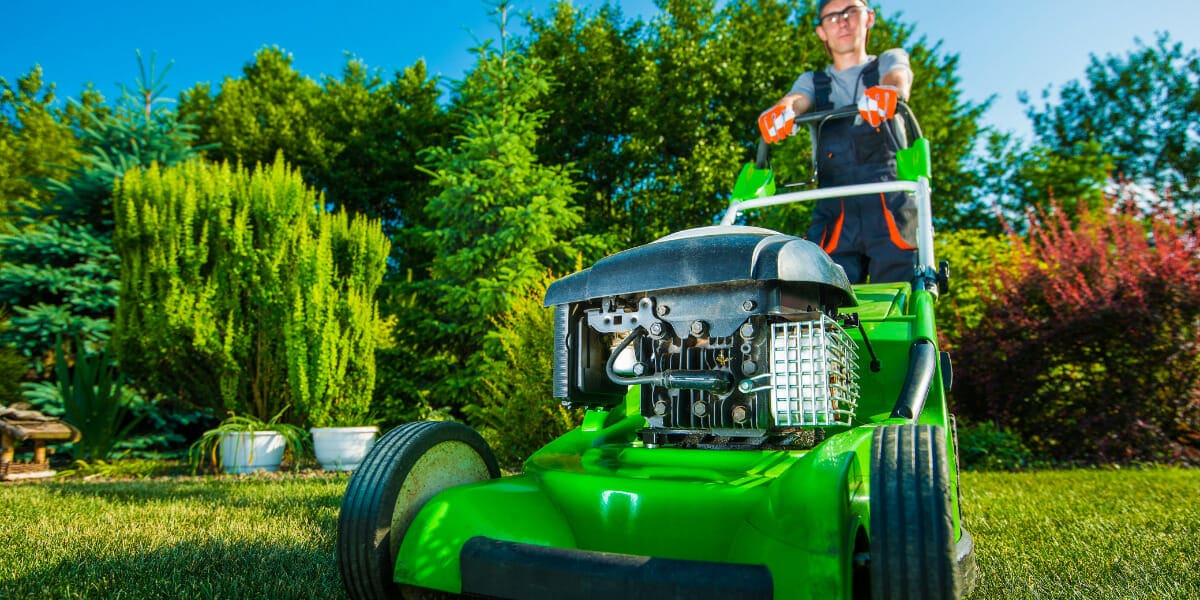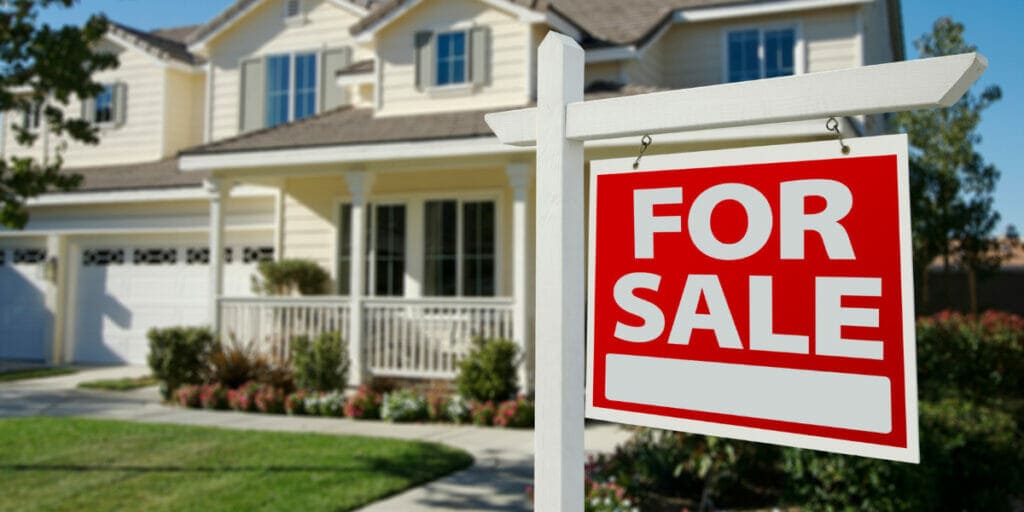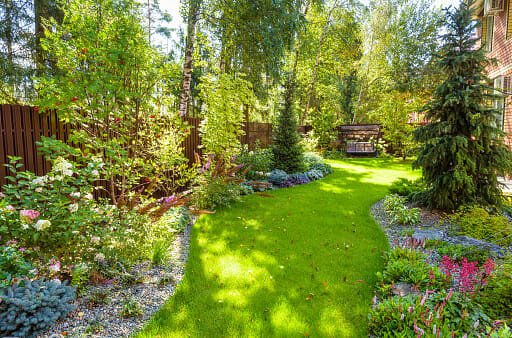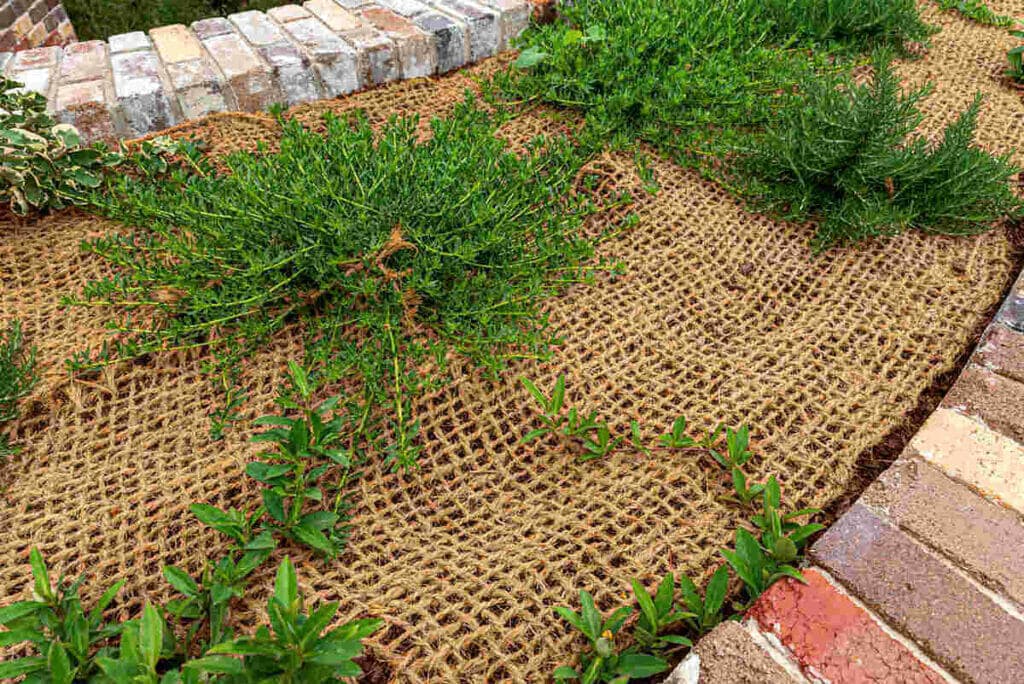Investing in Landscaping: The Key to Real Estate Value Appreciation
The impact of landscape design on real estate value is a subject of growing importance in property valuation and urban planning. As cities continue to expand and green spaces become scarcer, the role of well-planned landscapes in enhancing property values cannot be overstated. Landscape design goes beyond mere aesthetics; it influences a property’s overall ambiance, functionality, and desirability. Integrating sustainable and eco-friendly landscaping practices in this age of heightened environmental consciousness further magnifies its significance.
The first impression of a property is often formed by its external environment, and a thoughtfully designed landscape can significantly elevate curb appeal. Potential buyers and renters are drawn to homes with lush gardens, inviting outdoor spaces, and thoughtful hardscaping. Beyond aesthetics, landscapes offer functional benefits such as increased privacy, reduced noise pollution, and enhanced outdoor living areas. These elements create a sanctuary where homeowners can relax, entertain, and connect with nature.
Understanding how landscape design affects real estate value is valuable for homeowners looking to boost their property’s worth and for developers, investors, and city planners aiming to create thriving, sustainable communities that attract residents and enhance the overall quality of life. In this exploration, we will delve deeper into how landscape design can impact real estate values, from its influence on property pricing to its role in fostering a sense of well-being and community.
The Power of First Impressions
The power of first impressions must be balanced, especially in real estate. A. Curb appeal is the initial handshake between a property and its potential buyers. It’s the moment when a house introduces itself, and this introduction often takes place through its exterior. A well-maintained and aesthetically pleasing front yard can significantly enhance this first impression.
Attracting potential buyers begins with a well-designed landscape. An inviting front yard can evoke a sense of warmth and charm that instantly captivates visitors. It sets the tone for what lies beyond the front door, creating a sense of anticipation and excitement.
Consider the following examples of how a beautifully landscaped front yard can draw buyers in:
- Enhanced Visual Appeal: A meticulously manicured lawn, vibrant flowerbeds, and neatly trimmed shrubs create an immediate visual appeal. It communicates that the property is well-cared for and inviting.
- Increased Perceived Value: A thoughtfully designed landscape adds perceived value to the property. Buyers often pay more for a house that presents itself well from the outside.
- Emotional Connection: A front yard with character and charm can evoke positive emotions. It helps potential buyers visualize their future in the home, making it easier to connect on a personal level.
- Sense of Tranquility: A peaceful garden or a cozy seating area can provide a sense of tranquility, inviting potential buyers to linger and imagine the serene moments they could enjoy in the space.

Boosting Property Value Through Landscaping
Research and statistics on the relationship between landscaping and property value:
Numerous studies have consistently shown a strong correlation between landscaping and property value. According to the National Association of Realtors, well-maintained landscaping can increase a property’s value by as much as 20%. Additionally, research by the University of Michigan found that landscaping can directly impact the perceived value of a property, influencing potential buyers’ decisions. Homes with attractive landscaping sell faster and at higher prices than those without.
How landscaping enhances the aesthetics of a property:
Landscaping is the first thing potential buyers or visitors notice about a property, creating a crucial first impression. A well-designed landscape can transform a dull, uninspiring yard into a picturesque oasis. Elements such as lush lawns, vibrant flowerbeds, well-placed trees, and thoughtfully designed hardscapes like patios and walkways enhance a property’s curb appeal. This increased aesthetic appeal makes the property more attractive and adds perceived value.
Improving the functionality of outdoor spaces for increased value:
Landscaping doesn’t just improve aesthetics; it also enhances the functionality of outdoor spaces, which can significantly boost property value. Thoughtful landscaping can create functional zones for recreation, entertainment, and relaxation. Features like outdoor kitchens, fire pits, and seating areas can turn an ordinary backyard into an outdoor living oasis, effectively extending the usable square footage of a property. These improvements make a home more appealing to prospective buyers, increasing its value.
Research and statistics consistently support the idea that investing in landscaping can substantially increase property value. Landscaping improves aesthetics and adds functionality to outdoor spaces, making a property more desirable to potential buyers and ultimately driving up its market price. Therefore, homeowners and property investors should consider landscaping as a strategic investment to maximize their real estate assets.
Energy Efficiency and Sustainability
Trees and shrubs are crucial in enhancing energy efficiency and sustainability in various ways. Their ability to provide shade and insulation is critical to sustainable design and urban planning. When strategically planted around buildings, trees, and shrubs create a natural barrier against excessive sunlight and wind. This shade keeps indoor spaces more excellent during hot summers and reduces the need for air conditioning, reducing energy consumption and utility costs. Trees and shrubs also act as natural insulation, helping maintain consistent indoor temperatures year-round. This reduces the need for heating in the winter and cooling in the summer, further promoting energy efficiency and lowering carbon emissions.
Sustainable landscaping practices contribute significantly to energy efficiency and sustainability. By opting for drought-resistant native plants and reducing the use of water-intensive lawns, property owners can conserve water resources, reduce irrigation needs, and save on utility costs. Sustainable landscaping also involves using porous surfaces like gravel or pavers, allowing rainwater to infiltrate the ground rather than run into storm drains. This replenishes groundwater, helps manage urban flooding, and reduces the burden on municipal water treatment facilities. Employing eco-friendly irrigation systems such as drip irrigation and rain sensors further enhances water conservation efforts. Furthermore, sustainable landscaping practices often include composting, mulching, and proper soil management, promoting healthy plant growth and minimizing the need for synthetic fertilizers and pesticides.
The growing demand for eco-friendly properties reflects a broader shift toward sustainability in real estate. Homebuyers and renters are increasingly seeking properties that align with their environmental values. This demand has driven the construction and renovation of energy-efficient homes and commercial buildings, incorporating solar panels, energy-efficient appliances, smart thermostats, and advanced insulation. Eco-friendly properties reduce utility costs for occupants and contribute to reducing greenhouse gas emissions, making them a key player in combating climate change. As awareness of the environmental impact of real estate grows, developers, builders, and property owners recognize the economic and environmental benefits of investing in energy-efficient and sustainable properties.
Creating Outdoor Living Spaces
The Trend Towards Outdoor Living and Entertainment Areas
In recent years, people have significantly shifted how they view and utilize their outdoor spaces. The trend towards creating outdoor living and entertainment areas has gained tremendous popularity. This transformation can be attributed to several factors, including a growing appreciation for nature, a desire for healthier lifestyles, and a need for spaces that can adapt to the challenges posed by the pandemic.
Modern homeowners are increasingly recognizing the value of extending their living spaces outdoors. The appeal of being surrounded by the beauty of nature, enjoying fresh air, and connecting with the natural world is undeniable. As a result, outdoor spaces are evolving beyond simple gardens and yards into fully functional home extensions.
The Value of a Well-Designed Patio, Deck, or Outdoor Kitchen
Central to outdoor living spaces are well-designed features such as patios, decks, and kitchens. These elements not only enhance the aesthetics of a property but also provide functional areas for relaxation and entertainment.
A well-constructed patio or deck can be an inviting gathering place for family and friends. It offers the flexibility to host barbecues, outdoor dinners, or simply a peaceful retreat for reading or stargazing. Meanwhile, outdoor kitchens with grills, countertops, and dining areas elevate outdoor dining experiences, making them as convenient and enjoyable as indoor ones.
How Landscaping Can Expand Usable Square Footage
Landscaping is pivotal in expanding usable square footage in outdoor living spaces. Thoughtful landscaping designs can transform a regular backyard into a multi-functional oasis. This may include strategically placing trees and shrubs for shade and privacy, adding seating areas, and incorporating water features like ponds or fountains.
Landscaping also extends the usability of outdoor spaces throughout the year. Homeowners can create four-season outdoor retreats that thrive in different weather conditions by choosing the right plants and materials. This versatility allows people to enjoy their outdoor spaces in summer and during spring blossoms, fall foliage, and even winter wonderlands.
In conclusion, the trend towards creating outdoor living spaces reflects a more profound desire for a harmonious connection with nature and an expansion of our living environments. Through well-designed features like patios, decks, and outdoor kitchens, coupled with thoughtful landscaping, homeowners are discovering new ways to enjoy the great outdoors while maximizing the usability of their properties.
Privacy and Security
Privacy and security are vital aspects of any home environment, and landscaping is crucial in addressing both concerns.
- Landscaping elements such as hedges and fencing are essential for creating a sense of privacy in residential spaces. Dense shrubbery, tall trees, or well-placed fencing can shield your home from prying eyes and noise pollution. Hedges, for instance, provide a natural barrier that ensures privacy and adds aesthetic value to the property. Landscaping to create privacy is essential in urban environments where homes are often near each other.
- Enhancing security through landscape design involves strategic planning. Well-lit pathways, clear lines of sight, and removing potential hiding spots can deter potential intruders. Planting thorny bushes beneath windows or installing motion-activated lighting can further boost security. Additionally, using materials like gravel or gravel paths can alert homeowners to the presence of someone approaching. The company’s security-enhancing landscape features can provide peace of mind for homeowners.
- Attracting security-conscious buyers is another benefit of privacy and security-focused landscaping. A well-designed landscape can make your property more appealing to potential buyers in a real estate market where safety is a top concern. Highlighting security features in your landscaping, such as surveillance cameras or alarm system signage, can attract those seeking a secure living environment.
Low-Maintenance Landscaping
- Low-maintenance landscaping is an increasingly popular choice among busy homeowners for several compelling reasons. Many people juggle demanding work schedules, family commitments, and other responsibilities in today’s fast-paced world, leaving little time for extensive yard upkeep. As a result, low-maintenance landscaping offers a practical solution, allowing homeowners to enjoy the beauty of their outdoor spaces without the constant need for time-consuming maintenance.
- One key aspect of low-maintenance landscaping is using drought-resistant plants and xeriscaping principles. These approaches minimize the need for regular watering, saving time and conserving precious water resources. Drought-resistant plants are adapted to thrive in arid conditions, requiring less attention and reducing the risk of plant loss due to neglect or water scarcity. Xeriscaping, on the other hand, involves strategic design choices such as selecting native plants, mulching, and efficient irrigation systems to minimize water usage and maintenance requirements further.
- Another significant advantage of low-maintenance landscaping is the reduction in ongoing maintenance costs. Traditional landscapes with high-maintenance lawns and delicate flowerbeds can incur substantial mowing, fertilizing, weeding, and pest control expenses. In contrast, low-maintenance landscapes are designed to minimize these costs by relying on hardier, self-sustaining plants and low-input maintenance practices. Homeowners can redirect the resources saved on maintenance towards other priorities or enjoy peace of mind with a beautiful outdoor space that doesn’t demand constant attention.
Landscaping ROI: Where to Invest
A well-designed and maintained landscape can significantly enhance your property’s curb appeal and value. However, not all landscaping investments are created equal regarding returns. To maximize your return on investment (ROI), it’s crucial to identify key areas to invest in wisely.
- Identifying key areas to invest in for the best returns:
- Foundation Plantings: Investing in foundation plantings like shrubs and flowering plants near the front of your home can significantly improve its aesthetics and curb appeal. These plants are relatively low-cost and offer a high ROI.
- Lawn Care: A lush, green lawn can dramatically boost your property’s value. Regular maintenance, fertilization, and irrigation can ensure your yard remains healthy and attractive.
- Outdoor Living Spaces: Creating functional outdoor spaces like patios, decks, or seating areas can be a worthwhile investment. They enhance your quality of life and appeal to potential buyers, increasing the property’s value.
- Landscaping upgrades that pay off:
- Hardscaping: Features like walkways, retaining walls, and decorative stone elements can add structure and visual interest to your landscape. They provide a high ROI and require minimal maintenance.
- Water Features: Water features like fountains or ponds can be eye-catching, so they should be chosen wisely. Well-maintained water features can add charm and value to your property.
- Plant Selection: Opt for native or low-maintenance plants that thrive in your climate. These require less upkeep and are attractive to buyers.
- Balancing landscaping investments with the overall property value: Consider your property’s value when planning landscaping investments. It’s essential to offset the cost of landscaping upgrades and the potential increase in property value. High-end landscaping in a modest neighborhood may yield a low ROI. Conversely, neglecting landscaping in an upscale neighborhood can also have a negatively impact.
Landscaping can be a wise investment when done thoughtfully. Focus on enhancing key areas, choosing low-maintenance elements, and aligning your landscaping budget with your property’s overall value. Doing so lets you enjoy a beautiful outdoor space while maximizing your ROI when it’s time to sell your home.

Working with a Professional
Working with a professional landscaper or designer can yield numerous benefits, enhancing your property’s beauty, functionality, and value. A. The benefits of hiring a professional landscaper or designer include their expertise in creating stunning outdoor spaces. They deeply understand plants, hardscape elements, and design principles, ensuring your landscape is aesthetically pleasing and harmonious.
Professional landscapers can also save you time and money. They efficiently plan and execute projects, preventing costly mistakes and delays. Moreover, their industry connections can lead to discounts on materials and plants, further economizing your project. Additionally, a well-designed landscape can increase your property’s value, making it a wise long-term investment.
Choosing the right landscaping expert involves careful consideration of their qualifications, experience, and reputation. Start by checking their credentials and certifications, demonstrating their commitment to professionalism and continuous learning. Review their portfolio to assess their style and the quality of their work. References and reviews from previous clients are invaluable in gauging their reliability and customer satisfaction.
Effective communication is critical. Ensure the professional understands your vision, budget, and timeline. A good rapport and clear communication will foster a productive working relationship.
Collaborating with real estate agents for landscaping advice can be advantageous when selling or buying a property. Real estate agents have a keen understanding of market trends and buyer preferences. They can recommend landscaping improvements to increase your property’s appeal and resale value. Whether enhancing curb appeal or creating an inviting backyard oasis, real estate agents can provide valuable insights into the landscaping choices that yield the best return on investment.
Working with a professional landscaper or designer offers various benefits, from expert guidance and cost-efficiency to increased property value. To ensure a successful collaboration, carefully select a qualified professional and consider seeking advice from real estate experts when making landscaping decisions. With the right team, you can transform your outdoor space into a beautiful and functional extension of your home.
Conclusion
The impact of landscape design on real estate value is profound and multifaceted. A well-designed landscape enhances a property’s visual appeal and contributes to its functionality and overall desirability. The aesthetic beauty of a thoughtfully landscaped yard can attract potential buyers, creating a lasting first impression. Moreover, a well-maintained landscape adds to the curb appeal and can significantly increase the perceived value of a property.
Beyond aesthetics, landscaping can also offer functional benefits, such as creating outdoor living spaces, improving privacy, and enhancing energy efficiency. These factors can directly influence a property’s marketability and value. Additionally, a sustainable and low-maintenance landscape design can reduce ongoing maintenance costs for homeowners, further bolstering the property’s appeal.
In today’s competitive real estate market, landscape design has become a key differentiator, allowing properties with well-designed outdoor spaces to command higher prices and shorter time on the market. As such, investing in professional landscape design is an expense and a strategic decision that can yield substantial returns when selling a property.



